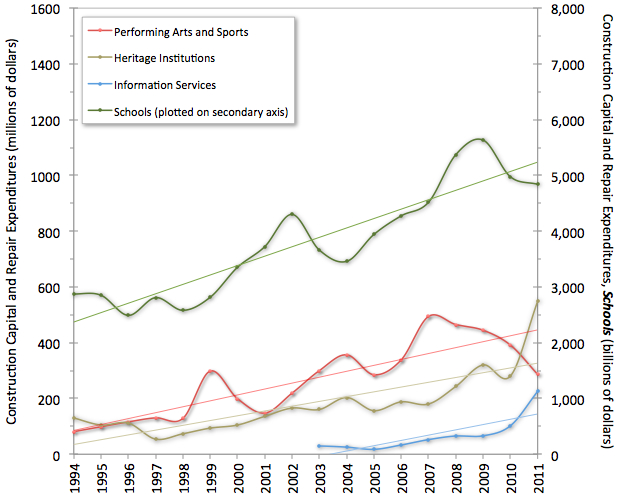July 2nd, 2013
Our most recent Solutions Agenda e-Dialogue explored the role of multi-functional spaces in communities. One outcome from our conversation was how these spaces can contribute to economies of scale through a sharing of resources. To further explore this concept, we analysed the construction and repair costs for building infrastructure relating to performing arts, heritage institutions, information services (i.e., libraries and public archives), and elementary and secondary schools. The figure below shows an overall increase in construction and repair expenditures occurring over the last 15 years. Our question then, is this not a waste of valuable resources at multiple levels?
For example, Port Clements Multiplex, one of the innovations featured in the e-Dialogue, was established following a 2006 study that showed that including the local elementary school in a multi-purpose building was more economically sound that repairing their existing building. Once the Multiplex was established, additional co-benefits emerged, such as innovative programming that connected the senior centre with the elementary school, building inter-generational social capital. What we see with this example is that the development of multi-functional spaces have the potential to reduce physical infrastructure costs while simultaneously providing opportunities for social innovation and community building.
Other examples we explored included the Centre for Social Innovation, a co-working space for social innovators, and Granville Island, a vibrant space in Vancouver that integrates retail, performing arts and festivals, post secondary education, parks, and public markets.

Data for the figure above was obtained through Statistics Canada. Data was unavailable for the years of 2012 and 2013, and for years prior to 2003 for Information Services.
- Log in to post comments



CRC Comments